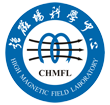题 目:Drug discovery for parasitic diseases to cancer with starting points provided by screening, literature, and patents
报告人:Prof. Jonathan Baell
单 位:Monash Institute of Pharmaceutical Sciences ,Monash University
邀请人:刘青松 研究员
时 间: 2012.11.07上午 9:30
地 点: 强磁场中心 201 会议室
报告人介绍:Dr Baell, Larkins Fellow and Senior Research Fellow of the National Health and Medical Research Council, is a Professor of Medicinal Chemistry at the Monash Institute of Pharmaceutical Sciences (MIPS, Victoria, Australia), Head of the MIPS-Servier Medicinal Chemistry Program and Head of the Australian Translational Medicinal Chemistry Facility. He is a Fellow of the Royal Australian Chemical Institute. He specializes in adding value to Australian publicly funded research, through improving the quality of HTS libraries, medicinal chemistry hit-to-lead and lead optimization, and computer-aided peptidomimetic design in order to generate compounds with potential therapeutic utility and of value. He has over 26 separate pharmaceutical patents, of which more than half are alive and licensed to a variety of licencees in a variety of disease areas. He has a number of compounds in various stages of development, from preclinical to one currently in phase I clinical trials for anxiolysis, and has consulted widely for the Australian Biotechnology Industry. In 2005 he was awarded the 2004 Biota Medal, a National Award for Excellence in Medicinal Chemistry for an early to mid-career researcher. His 2010 publication on Pan Assay Interference Compounds, or PAINS, and has been most highly cited primary research article in the Journal of Medicinal Chemistry over a 3-year period. In 2011 he formed a medicinal chemistry-based consortium for the discovery of new treatments for human African trypanosomiasis, or Sleeping Sickness, involving six different research organizations from around Australia. His current research interests are focused in the areas of neglected and tropical diseases, small molecule epigenetic modifiers, and HTS library design.
报告摘要:The best starting points for drug discovery often come from the literature – especially patents – or random screening, often aided by structure-based drug design. We have been successful using all three approaches in a variety of disease areas, from inflammation and autoimmunity, parasitic diseases such as malaria, Chagas’ disease and Sleeping Sickness, to cancer. In this seminar, a selection of these examples will be presented.





